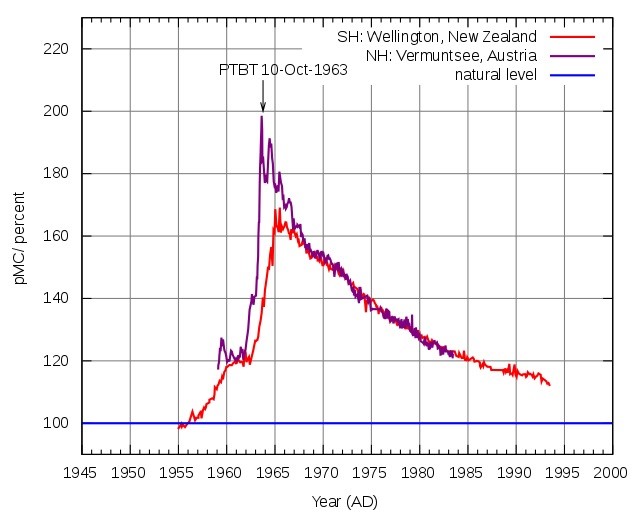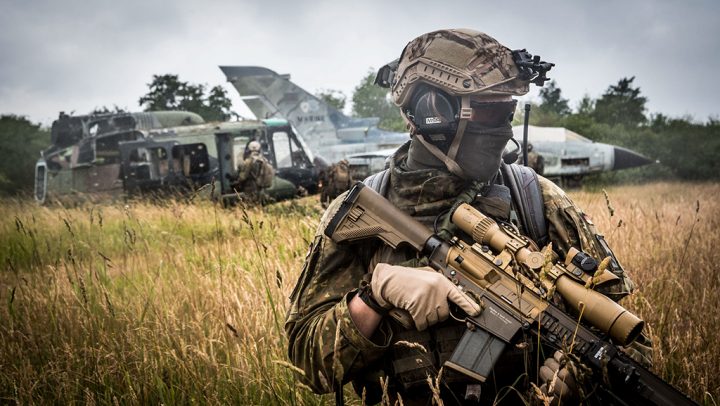by Silvia Swinden
NATO’s roots go back to the fateful day when the US dropped its A-bombs in Hiroshima and Nagasaki. In order to neutralise the opinions of people like Eisenhower, who knew that the Japanese were looking for ways to surrender and there was no need to drop them, the Americans went ahead anyway[1], because they needed to test the bombs and, more importantly, send a message to the Soviet Union: here is our military superiority. Although they were allies during the war, the ideological differences created by the Communist Revolution were already taking shape. In other words, the bombs were not the end of World War II but the beginning of the Cold War. (In a Newsweek interview, Dwight Eisenhower recalled the meeting with Henry Stimson again: “…the Japanese were ready to surrender and it was not necessary to hit them with that horrible thing.” – Ike on Ike, 11/11/63).
In retrospect, to silence criticism from both the general population and members of the U.S. Armed Forces who handled reliable information that the attack had been unnecessary, and with the obvious intention of attacking civilians, since there were no military targets, this number was invented: “at the end of the war a million American lives were saved by the bombing,” confirming Mark Twain’s paraphrased quote “politicians use statistics like a drunkard uses a lamppost, for support rather than for illumination.”
NATO is born
In 1947, several European countries signed mutual defence treaties in the event of aggression by Germany or Russia. After the incorporation of the USA in 1949, it was born as the North Atlantic Treaty Organisation and progressively incorporated other countries of the West in the northern hemisphere. It was not really activated as a military bloc until the Korean War, which led to the creation of a new military structure under the leadership of the US army.
With the Cold War already declared, the Warsaw Pact was created in 1955 as a response to NATO’s progressive armament, both conventional and nuclear, which led to the arms race. The arms trade becomes one of the most productive and destructive businesses in the world (with the commitment to invest 2% of the GDP of each NATO country in armaments, the United States secured its market for its arms production, its military-industrial complex). It also meant the permanent threat of total world nuclear destruction, the demand for “alignment” of satellite countries and the progressive dehumanisation of the “enemy” manipulated by the media at the service of the system, by over-dimensioning in an Orwellian way the external threat to maintain internal power over the population.
France, under De Gaulle, mistrusted the US and decided to create its own independent nuclear deterrent (perhaps allegorised in Asterix as the magic potion that allows the rebellion of the Gauls against the Empire?).
Faced with the impossibility of contemplating a direct war between NATO and the Warsaw Pact, due to the clear MAD (Mutual Assured Destruction) option, the military blocs sought to ensure their hegemony through proxy (or indirect) wars and military coups in South America, Africa and Southeast Asia, seeking to establish puppet governments to control the abundant natural resources needed to keep the arms race rampant.
Experiments in the development of nuclear weapons produced a dangerous increase in atmospheric radioactivity leading to a ban on open-air testing.
 |
| Increased environmental radioactivity in New Zealand (200) and Austria (170) compared to the natural level (100) |
After the fall of the Berlin Wall in 1989, considered the triumph of capitalism over communism, partly because of NATO’s ability to increase military spending more than Pact countries (Reagan’s strategy of outspending the Soviet Unions), NATO begins an offensive to integrate former Pact countries, reneging on the promise made to Gorbachev during negotiations to allow Germany’s reunification (Secretary of State James Baker promised that “NATO’s current military jurisdiction would not extend an inch eastward”). Poland, Hungary, the Czech Republic, Bulgaria, Estonia, Latvia, Lithuania, Romania, Slovakia, Slovenia, Albania, Croatia and Montenegro are now NATO members, with potential nuclear missile hosting arrangements (as already do Belgium, Germany, Italy, the Netherlands and Turkey), near the border with Russia, which has responded by moving missiles closer to its frontiers.
In fact, NATO tried to find another enemy as the Soviet Union fell, creating a sort of crisis of identity and purpose, and Al Qaeda was at hand, armed to the teeth by the US in support of the Mujahideen war (even in a Bond film they are the good guys!) against Russia in Afghanistan. Apparently Al Qaida is translated as “the database” or the list of CIA-supported operatives. When the Russians left, the local forces turned against the US and NATO found its new justification. But the jihadists were too elusive an enemy and not suitable for the war of large missiles and nuclear weapons. NATO needed to reboot the Cold War.
Thus it intervened in the conflict in Yugoslavia, and dragged its members into the wars in Afghanistan and Iraq. Its actions in Libya have left as a sequel a failed state (in reality convenient for the exploitation of its oil by the US) and as a consequence of these interventions jihadist movements have arisen such as the Islamic State of Iraq and the Levant -ISIL-. Due to several rebellions from countries no longer interested in participating in another war, the US intervenes in Syria in an underhand way through proxies (“anti-Assad moderates”) such as Al Nusra, affiliated to Al Qaida, and supporting Saudi Arabia in its campaign to achieve hegemony in the region. To the same end, it invokes all kinds of excuses to achieve a change of regime in Iran – a country with a long history of interventions by Western countries in search of its oil – and its inconvenient strategic situation that allows it to control the Strait of Hormuz, through which most of the oil tankers from the Middle East leave.
But NATO remains focused on promoting conflict with Russia as the main justification for continuing the arms race on which the U.S. economy largely depends. Thus, Donald Trump has begun to put pressure on member states to increase their contribution to NATO from 2 to 4% of their GDP[2]. The global alarm caused by the arrival at the most decisive post for a possible nuclear war of an individual as unpredictable and unstable as Trump cannot be ignored.
The combined military spending of all NATO member countries is estimated to exceed 76% of global military spending, estimated in 2016 at $1,686 billion according to SPIRI, the Stockholm Peace Research Institute, and continues to rise.
NATO has 29 members and 21 countries collaborating with the body in the surrealistically named “Partnership for Peace” programme. Other countries appear as “partners” in different programmes. The inclusion of Colombia as a partner, and possible future member, has recently raised the alarm of South American countries, as it would lead to a conflict with the Treaty of Tlatelolco, which specifically excludes nuclear weapons in the territory of Latin America and the Caribbean.
On the other hand, it is important to remember that the nuclear powers are also the main arms-exporting countries and permanent members of the UN Security Council, whose only clear role seems to be to maintain sufficient war conflicts for their arms businesses.
The Armed Wing of Capitalism
“ICAN (International Campaign for the Abolition of Nuclear Weapons) has identified hundreds of banks, pension funds, insurance companies and asset managers around the world with substantial investments in nuclear weapons producers. The Don’t Bank the Bomb report, updated annually by PAX, provides details of financial transactions with companies that are heavily involved in the manufacture, maintenance and modernisation of US, British, French and Indian nuclear forces.“[3].
There is a clear conflict of interests between investors in banks and hedge funds (such as the husband of the UK Prime Minister), politicians with shares in the military industrial complex and their involvement in making decisions about wars and invasions, as well as in selling arms to countries with a clear history of human rights violations and the well-documented use of these weapons in the repression of their own populations.
In addition, documents recently declassified in the UK confirm that war is seen as a marketing exercise similar to tele-shopping that promotes arms sales, as it allows for “a wide range of live ammunition demonstrations and real evidence”[4].
Nuclear weapons are prioritised in budgets, for example in the UK the government continues its investment in upgrading the Trident missile and submarine system at an estimated cost of over £150bn, while imposing draconian cuts and austerity, destroying the health system, education, access to housing and social welfare. Analysts, both civilian and military, have already denounced that Trident has no justification in the defence programme, is inappropriate for the real threats of today’s world, such as cyber-terrorism, the possibility of “dirty” (radioactive) bombs and conventional conflicts. But it is clear that the major causes for such expenditures, as well as two new mega aircraft carriers, for which some £6.2bn was paid for each, have nothing to do with defence and much to do with the economy and politics, with the major arms producers being also major donors to the Conservative party.
The use of nuclear weapons is unthinkable due to their humanitarian effects and yet they already appear on the battlefield in an underhanded manner, as depleted uranium, and the announced small “nukes” with which the US threatens Iran.
It is estimated that 10% of the weapons budget can end world hunger, and it is also important to recover scientists dedicated to the development of weapons, nuclear or otherwise (the real “brain drain”), to meet the real needs of humanity.
About the author
Silvia Swinden is a journalist, Editor of Pressenza London, author of the book “From Monkey Sapiens to Homo Intentional, the Phenomenology of the Nonviolent Revolution”, participates in World without Wars and without Violence.
[1] The condition of the Japanese was that the figure of the Emperor be preserved; the United States, on the other hand, demanded “unconditional surrender or nothing,” which became the pretext for the bombing; however, later, it accepted the Japanese condition.
[2] https://www.theguardian.com/world/2018/jul/11/donald-trump-tells-nato-allies-to-spend-4-of-gdp-on-defence?CMP=Share_iOSApp_Otherp
[3] http://www.icanw.org/projects/dont-bank-on-the-bomb/
Article published in Revista América Latina en Movimiento: Paz y NoViolencia: Rebeldía a un sistema violento 17/09/2018










